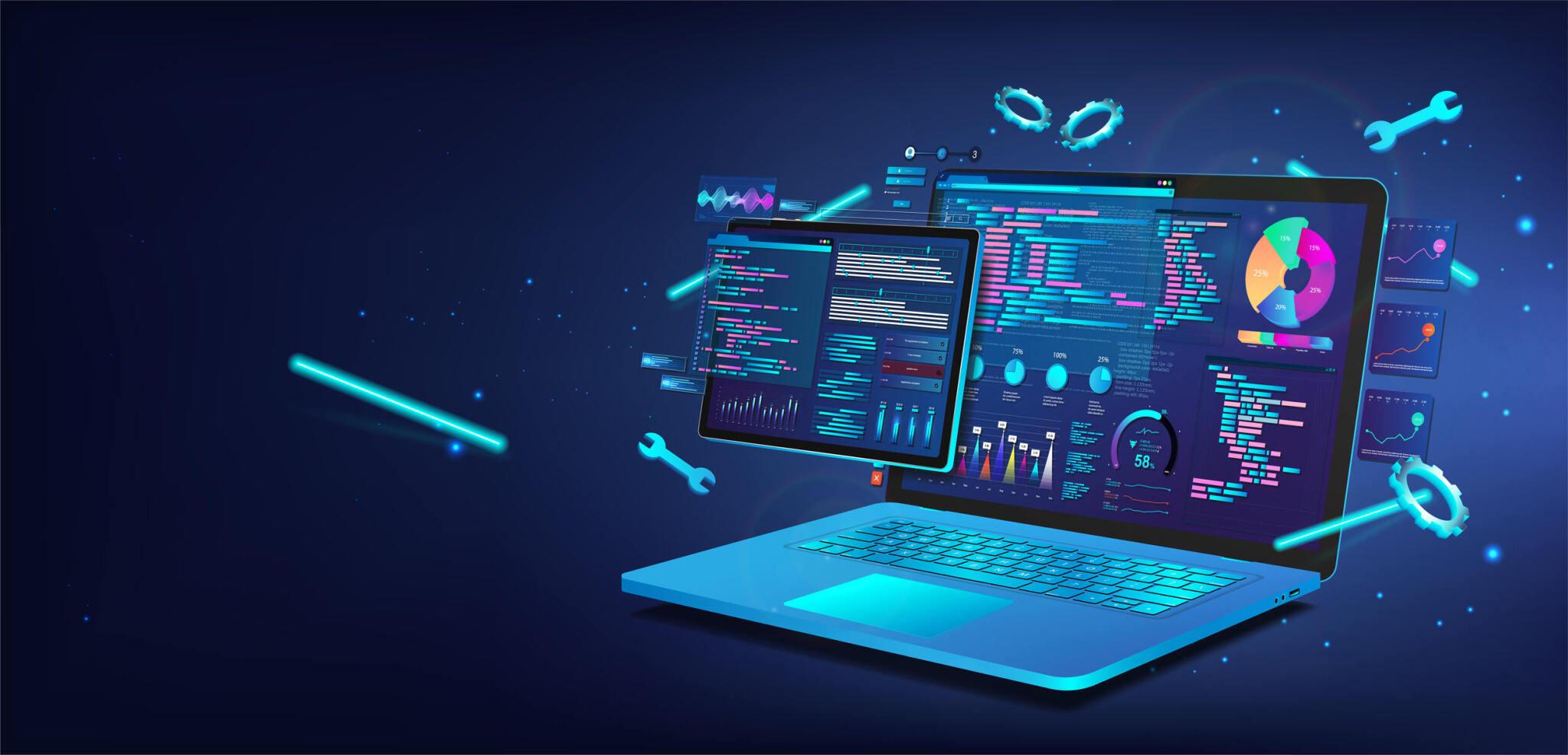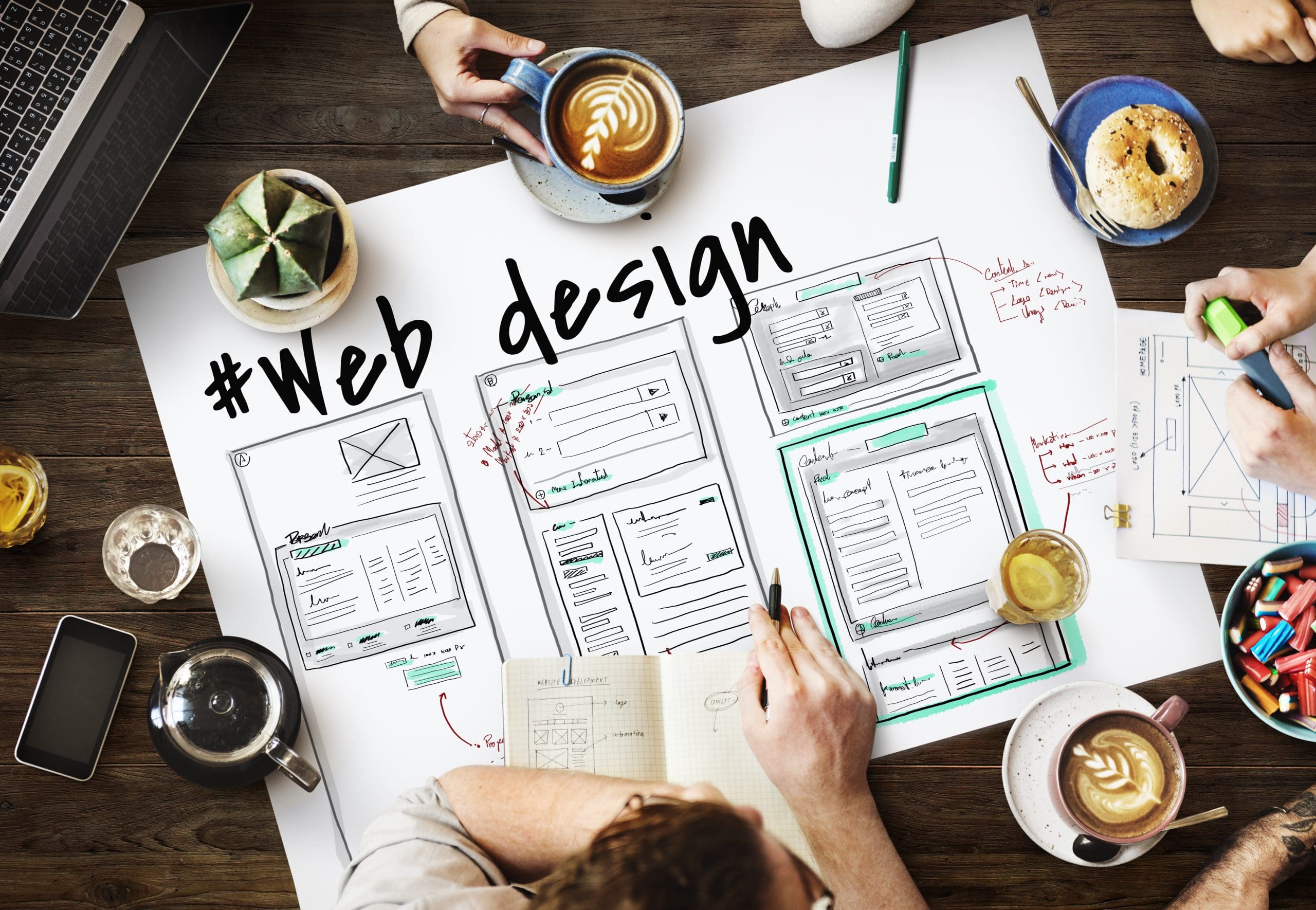How Web Design Johannesburg Is Transforming the Digital Experience in 2025
The Vital Aspects of Effective Website Design: A Comprehensive Overview
Reliable website design incorporates numerous critical components that considerably impact individual experience. It requires careful factor to consider of elements such as mobile responsiveness, instinctive navigation, and aesthetic hierarchy. Each element plays an important function in crafting a website that not just brings in visitors however additionally keeps them. Recognizing these foundational elements is crucial for services intending to enhance their on the internet visibility. What truly differentiates an effective internet site from its competitors?
Understanding Individual Experience (UX) Design
Individual experience (UX) Design functions as the foundation of reliable website design, focusing on how individuals engage with a website. It encompasses various aspects, including functionality, access, and overall fulfillment. An effective UX Design starts with customer study, recognizing the target market's demands and behaviors. Wireframes and prototypes are after that created to envision the internet site's framework and circulation. Website Design Klerksdorp. Examining with actual customers supplies useful insights, allowing developers to improve the user interface and enhance navigating. Aesthetic Design components, such as typography and color design, boost the total aesthetic while supporting capability. Inevitably, efficient UX Design warranties that individuals can easily complete their goals, fostering engagement and commitment. By prioritizing user experience, websites can attain higher conversion prices and a positive credibility
Importance of Mobile Responsiveness
As smart phones progressively dominate web usage, making certain mobile responsiveness has come to be crucial for efficient website design. Internet sites that are not optimized for mobile can bring about a bad user experience, leading to higher bounce rates and shed chances. A mobile-responsive Design permits material to adjust perfectly to numerous screen dimensions, making sure that users can access info easily, no matter of the device they utilize. Additionally, search engines focus on mobile-friendly internet sites in their rankings, making responsiveness an essential variable for exposure and web traffic. With a growing number of customers accessing the internet via tablets and mobile phones, businesses should spend in mobile responsiveness to boost user interaction, boost brand name perception, and eventually drive conversions. Reliable website design must prioritize mobile responsiveness to stay affordable in today's electronic landscape.
Crafting Instinctive Navigating
Navigation acts as the backbone of any efficient internet site, guiding visitors through material effortlessly. An instinctive navigating framework boosts customer experience by permitting customers to find details quickly and efficiently. Clear labeling of menu items is vital; it must mirror the web content properly, preventing lingo that may confuse users. Additionally, a rational pecking order is important, allowing users to recognize partnerships in between different sections. Consistency across web pages aids enhance expectations, while breadcrumbs offer context and a sense of direction. Receptive navigating menus that adjust to various gadgets additionally enhance ease of access. Eventually, the goal is to create a seamless trip for visitors, guaranteeing they can explore the site without frustration, leading to a more involved and pleased audience.
Making Use Of Visual Pecking Order
Aesthetic pecking order plays a crucial role in website design by leading individuals' attention and boosting their experience. Efficient layout methods, together with thoughtful choices in shade and typography, can greatly affect how details is viewed and refined. Comprehending these components is crucial for producing functional and aesthetically appealing web sites.
Value of Visual Power Structure
Effective website design pivots on the principle of aesthetic hierarchy, which overviews customers via content in a rational and user-friendly manner. This principle is crucial for boosting customer experience, as it helps prioritize information and guides interest to necessary components. By developing a clear hierarchy, web developers can assure that users quickly identify essential messages, phones call to activity, and navigating alternatives. A well-structured aesthetic power structure reduces cognitive lots, enabling individuals to process information effectively. Additionally, it fosters engagement by producing an attractive format that invites expedition. Eventually, comprehending the significance of visual hierarchy is important for any web designer aiming to develop reliable and easy to use internet sites that efficiently connect their intended messages.

Techniques for Effective Format
An efficient format serves as the foundation of any type of effective internet Design, enabling users to easily navigate through content. Reliable strategies include grid systems, which supply a structured framework for lining up elements, assuring consistency and equilibrium. In addition, utilizing whitespace strategically can enhance concentrate on essential areas, reducing aesthetic clutter and guiding customer interest. Prioritizing web content with size and positioning additionally highlights important details, while contrasting components can produce a clear visual pecking order. Applying receptive Design methods assurances formats adapt flawlessly across devices, maintaining functionality. Ultimately, including instinctive navigating aids, such as switches and menus, enhances customer experience, making it less complicated for site visitors to discover appropriate details rapidly. Together, these methods create the structure of an efficient internet layout.
Shade and Typography Choices
While color and typography options may appear like simple Design aspects, they play an important function in developing visual pecking order on an internet site (Web Design South Africa). Color can lead users' interest, separate areas, and share brand name identification. By strategically using contrasting colors, designers can highlight essential phone call to activity, guaranteeing they stick out. Typography, on the various other hand, affects readability and customer engagement. A well-chosen font can communicate tone and character, while differing font dimensions and weights can create a clear structure. Larger, bolder headings draw interest, while smaller body text gives thorough information. Together, reliable shade and typography options create a cohesive aesthetic experience, leading users via the web content effortlessly and enhancing general use
Choosing the Right Color Pattern
Exactly how does one choose the excellent color design for an internet site? Picking the ideal color design is vital for boosting individual experience and conveying the brand name's message. Developers ought to begin by taking into consideration the target market and the feelings that different shades evoke. Blue usually symbolizes count on, while red can create necessity. It is necessary to limit the scheme to a couple of complementary shades to maintain aesthetic harmony and stay clear of overwhelming customers. Utilizing devices like color wheel applications can assist in selecting shades that work well with each other. In addition, designers must ensure that there suffices comparison in between message and history colors for readability. Eventually, a well-balanced color design can greatly impact a site's efficiency and user interaction.
Including Engaging Content

Engaging content is crucial for catching and maintaining the focus of see this web site site visitors. It acts as a bridge in between the site's Design and the user's experience, fostering deeper connections. Efficient content usually includes a mix of useful posts, enchanting visuals, and interactive elements that encourage customer engagement. By making use of narration strategies, internet sites can evoke feelings, making the material extra unforgettable and relatable. Furthermore, including user-generated content, such as testimonials or testimonies, improves reliability and builds count on with the audience. Clear calls-to-action overview individuals toward wanted outcomes, ensuring they remain engaged. Generally, a tactical technique to content development not just boosts user experience but likewise drives conversions, making our website it a critical aspect of effective website design.
Maximizing for Speed and Performance
Optimizing for rate and performance is important for boosting customer experience on a site. Methods such as picture compression, minifying CSS and JavaScript, and leveraging internet browser caching can significantly reduce filling times - Web Design South Africa. These approaches not just boost efficiency yet additionally add to better search engine rankings
Image Compression Techniques

Minifying CSS and JavaScript
Several internet designers concentrate on picture optimization, minifying CSS and JavaScript is equally essential for improving site rate and efficiency. Minification entails eliminating unnecessary characters from code, such as whitespace, comments, and formatting, without influencing its performance. This procedure results in smaller documents sizes, which causes faster packing times and boosted user experience. By lowering the amount of data moved in between the server and the client, minification helps lessen bandwidth usage and improves total site performance. Additionally, online search engine prefer faster internet sites, which can improve search rankings. Executing tools and automated processes for minifying these manuscripts can streamline internet growth and maintenance, guaranteeing that efficiency remains a priority throughout the lifecycle of a web site.
Leveraging Browser Caching
Leveraging internet browser caching greatly improves website speed and efficiency by keeping regularly accessed sources in your area on a user's device. This method reduces the demand for duplicated demands to the web server, considerably decreasing packing times for returning site visitors. By utilizing HTTP headers, internet developers can define caching guidelines for different sources, such as stylesheets, photos, and manuscripts. Appropriately carried out caching approaches permit users to experience faster page loads, resulting in boosted user complete satisfaction and interaction. In addition, internet search engine favor internet sites with enhanced efficiency, possibly improving search rankings. Regularly examining and managing cache setups ensures that individuals obtain current material while still taking advantage of the performance of cached resources. In conclusion, effective internet browser caching is a vital component of optimizing internet efficiency.
Regularly Asked Concerns
Just how Do I Pick the Right Web Design Devices?

Selecting the best website design tools includes assessing project requirements, recognizing individual needs, and examining numerous software program attributes. Compatibility, ease of use, and community assistance are also crucial variables to take into consideration for reliable Design end results.
What Are Common Website Design Mistakes to Stay Clear Of?
Typical website design mistakes to stay clear of include chaotic layouts, bad navigating, inadequate mobile responsiveness, slow-moving loading times, and disregarding customer experience. Effective layouts prioritize performance, simpleness, and ease of access to engage customers and boost satisfaction.
Exactly How Can I Measure My Web site's Success?
To gauge a website's success, one may assess metrics such as traffic, conversion rates, user engagement, and bounce rates. Making use of devices like Google Analytics can give valuable understandings for recurring optimization and renovation approaches.
What Duty Does Search Engine Optimization Play in Internet Design?
Search engine optimization substantially affects website design by guaranteeing that sites are structured for online search engine exposure. This includes maximizing website speed, mobile responsiveness, and content top quality, inevitably improving user experience and driving organic website traffic.
Exactly how Commonly Should I Update My Web Site Design?
The frequency of website Design updates relies on sector patterns, user responses, and technological advancements. Typically, a refresh every 2-3 years is suggested, making sure the site continues to be appropriate and aligned with existing standards and customer expectations.
Customer experience (UX) Design serves as the foundation of efficient internet Design, focusing on just how individuals interact with a web site. With a growing number of individuals accessing the internet by means of smartphones and tablet computers, companies have to invest in mobile responsiveness to improve customer interaction, boost brand name learn the facts here now perception, and inevitably drive conversions. An intuitive navigating framework boosts individual experience by permitting users to discover details rapidly and successfully. Properly carried out caching strategies enable customers to experience faster web page loads, resulting in enhanced customer complete satisfaction and involvement. The frequency of site Design updates depends on sector fads, user feedback, and technological innovations.